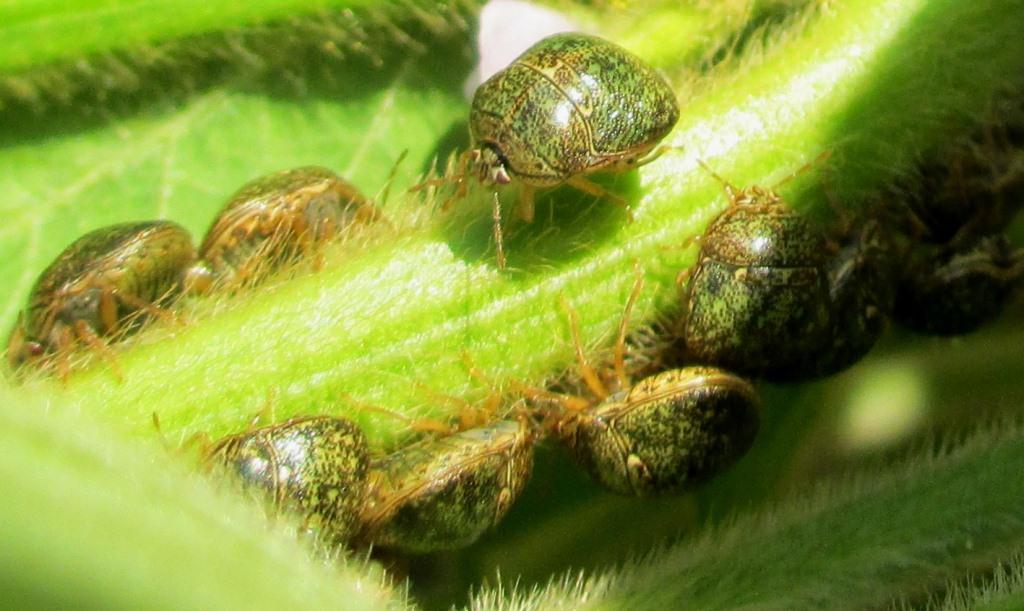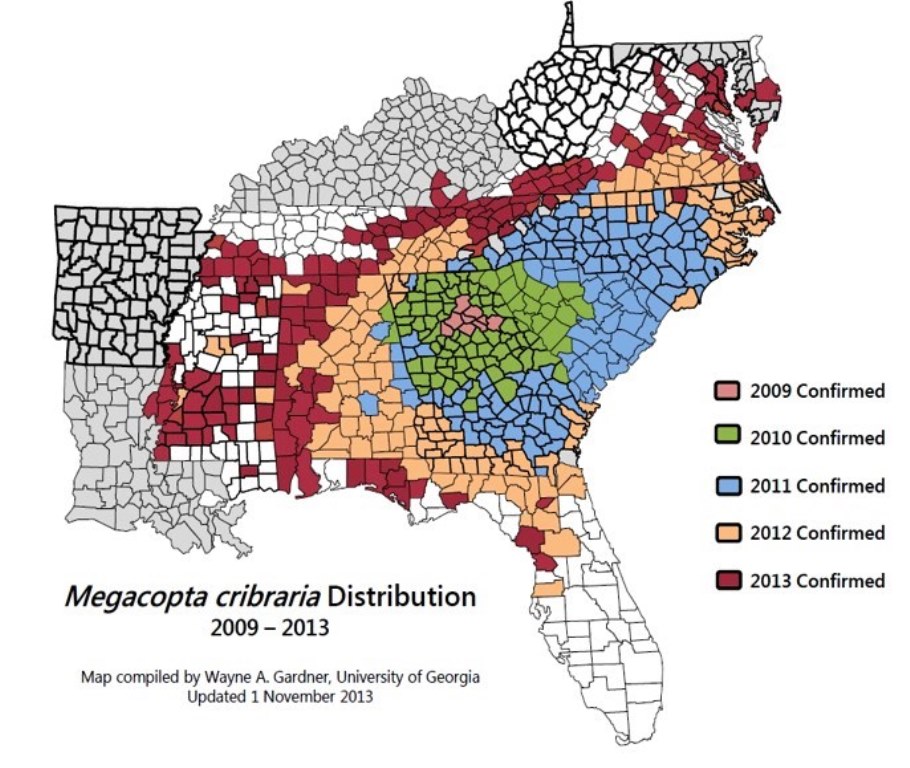Were you among the many visited by Kudzu Bugs last week? If you saw a large number of small greenish, round, flattened insects on your home’s exterior walls, then “yes” is the answer! You and lots of your friends and neighbors received an unexpected guest last week when the relatively-new invasive insect from Asia, the Kudzu bug, landed on homes or places of business looking for overwintering sites.
This insect with the scientific name of Megacopta cribraria arrived in the U.S. a few years ago and is steadily marching across the southern states. Figure 1 shows the current distribution of this invasive insect. This pest feeds on soybean, kudzu and other legumes (beans) and can be an important pest of crops. It is best known, however, for the pungent odor it emits when disturbed, and the large numbers that are seen on the sides of buildings in the fall trying to find a place to overwinter.
The Kudzu bug is just the latest non-native insect to arrive in Florida along with the redbay beetle which transmits laurel wilt to redbay and other trees, several whitefly and scale species, and the multicolored Asian ladybeetle which also overwinters in dwellings. Florida is an entry point into the United States for many types of imported commercial goods, and insect pests often unintentionally hitch a ride in shipping containers with these goods from other countries.
Fortunately, the overwintering flights by the kudzu bug only lasts a few days in the fall, but if your dwelling is one they select to land on and then use by crawling into cracks and crevices, you may also have a problem with them on the interior of your dwelling which will be even worse than having them on the exterior. The best remedy to minimize this possibility is to caulk all the openings where they might enter your dwelling. One might wish to apply insecticides to control the Kudzu bugs, but that option is both difficult to properly time as well as mostly ineffective.
Often it takes about ten years for introduced invasive insects, such as the kudzu bug, to become established and reach high populations. Ideally, populations of natural enemies start catching up to them and reduce their numbers. Scientists trying to control non-native invasive pests often search for and collect the natural predators and parasites of these pests in their country of origin. These predators and parasites are then extensively tested to ensure they will not harm any of our native plants and animals. Once tested and approved, these predators and parasites are released to suppress the spread of the non-native pests in the U.S. This is termed “classical biological control” and in many cases has been very effective. However, it is expensive research and requires intensive tests within quarantine facilities before they are approved for release. Fortunately, in some cases, native natural enemies will attack the invasive species and help suppress them as well.
This may not be good news for the overwintering swarms of kudzu bugs as native representative species of both a parasite and a predator have been found and are being researched with the hope that high populations of the kudzu bug, and other invasive species, can be suppressed to acceptable population levels.
To learn more about kudzu bugs, contact your local Extension Office, read a brief summary in the UF/IFAS publication:Bean Plataspid: Megacopta cribraria (Fabricius) (Insecta: Hemiptera: Heteroptera: Plataspidae) or go to the official Kudzu Bug Website
- Apopka WeevilConfirmed in Jefferson County Nursery - September 14, 2018
- Potential Pests and Diseases of Olives in Florida - October 14, 2016
- Plant Recommendations to Augment Ecosystems Services - February 12, 2016


